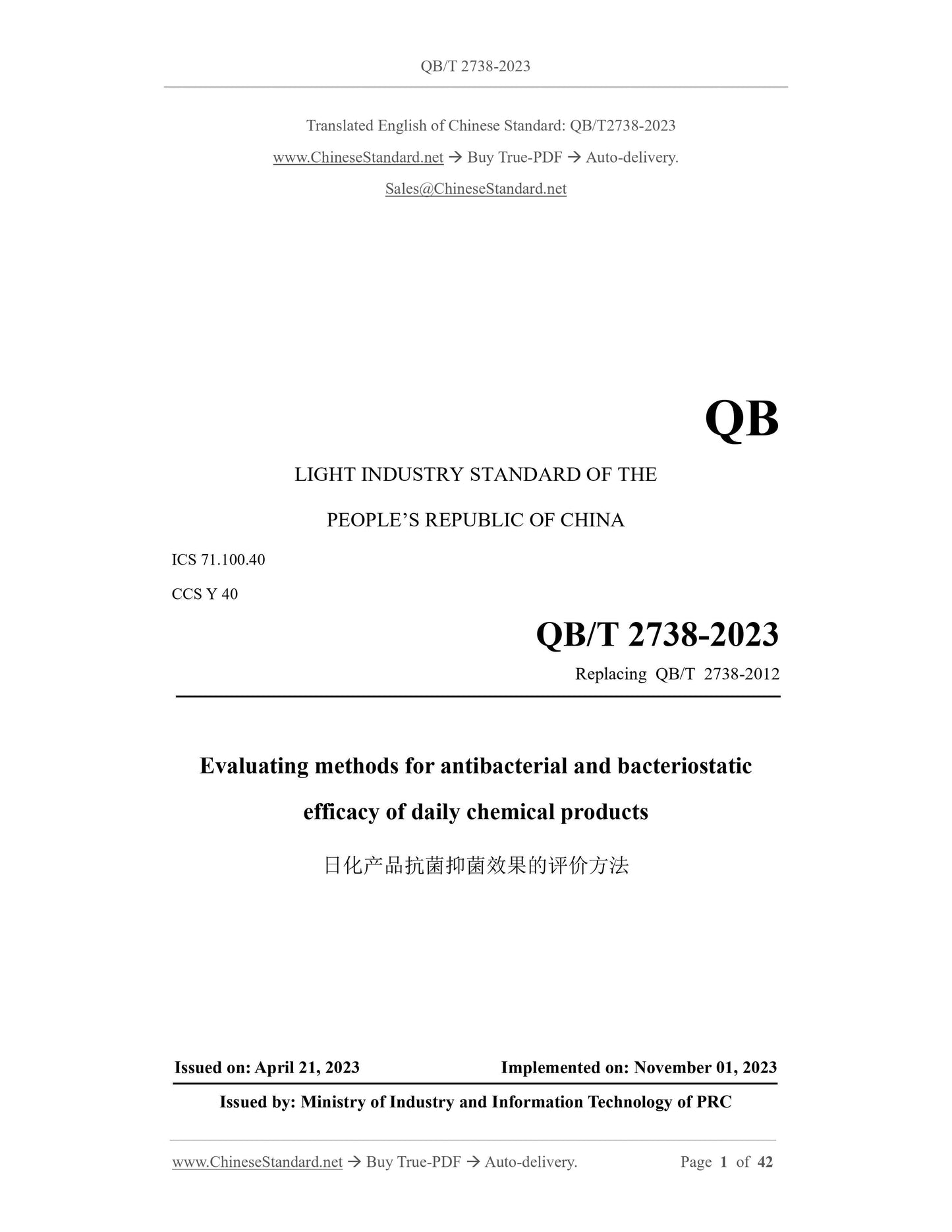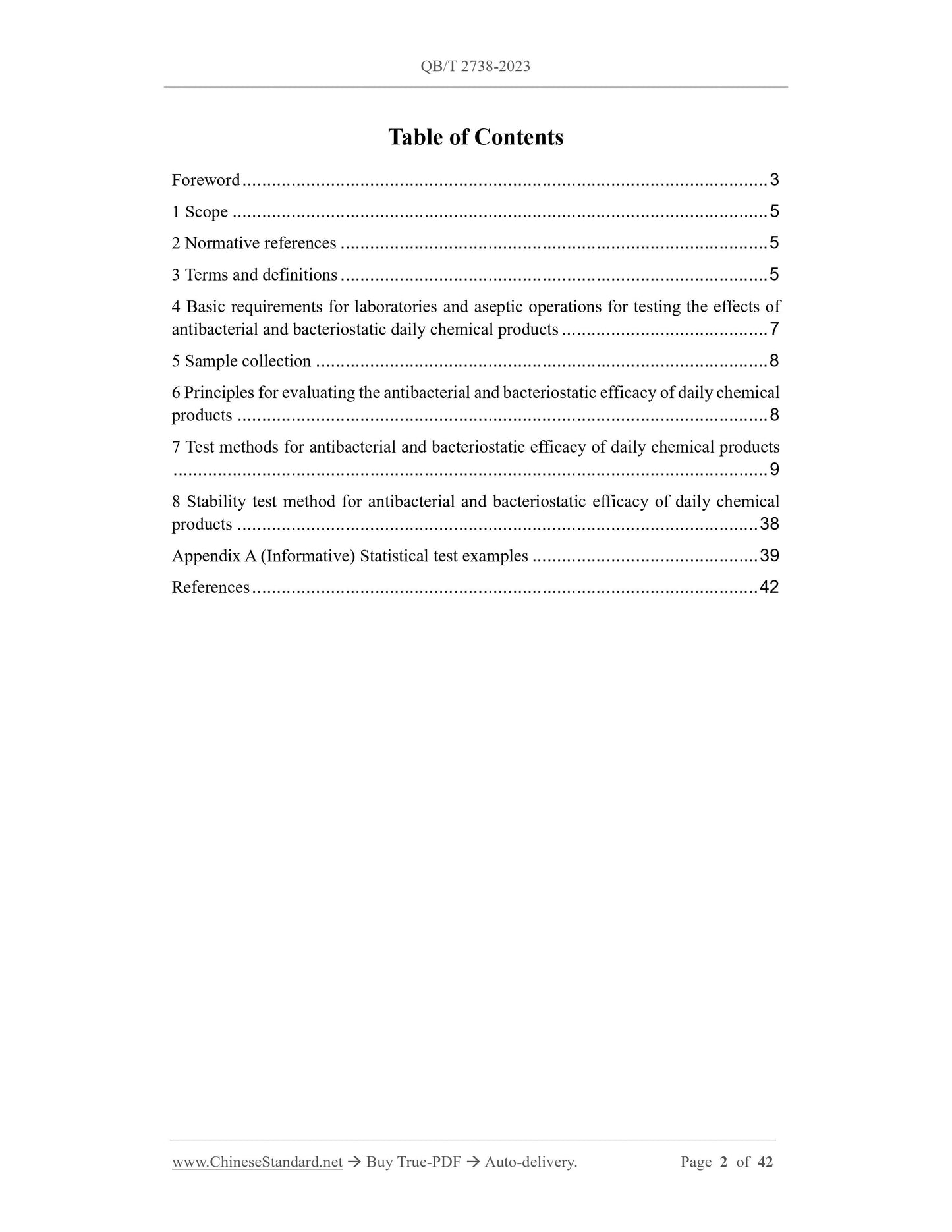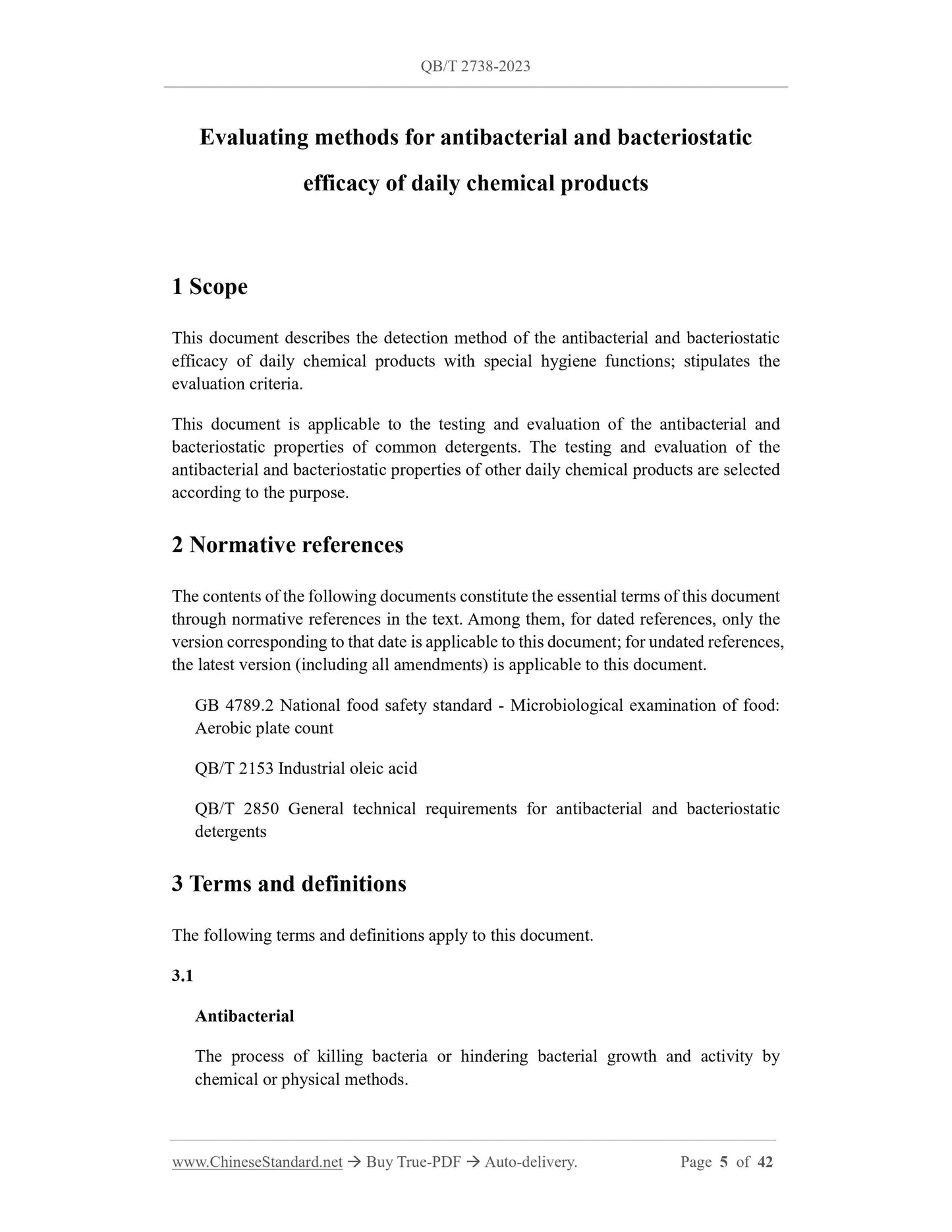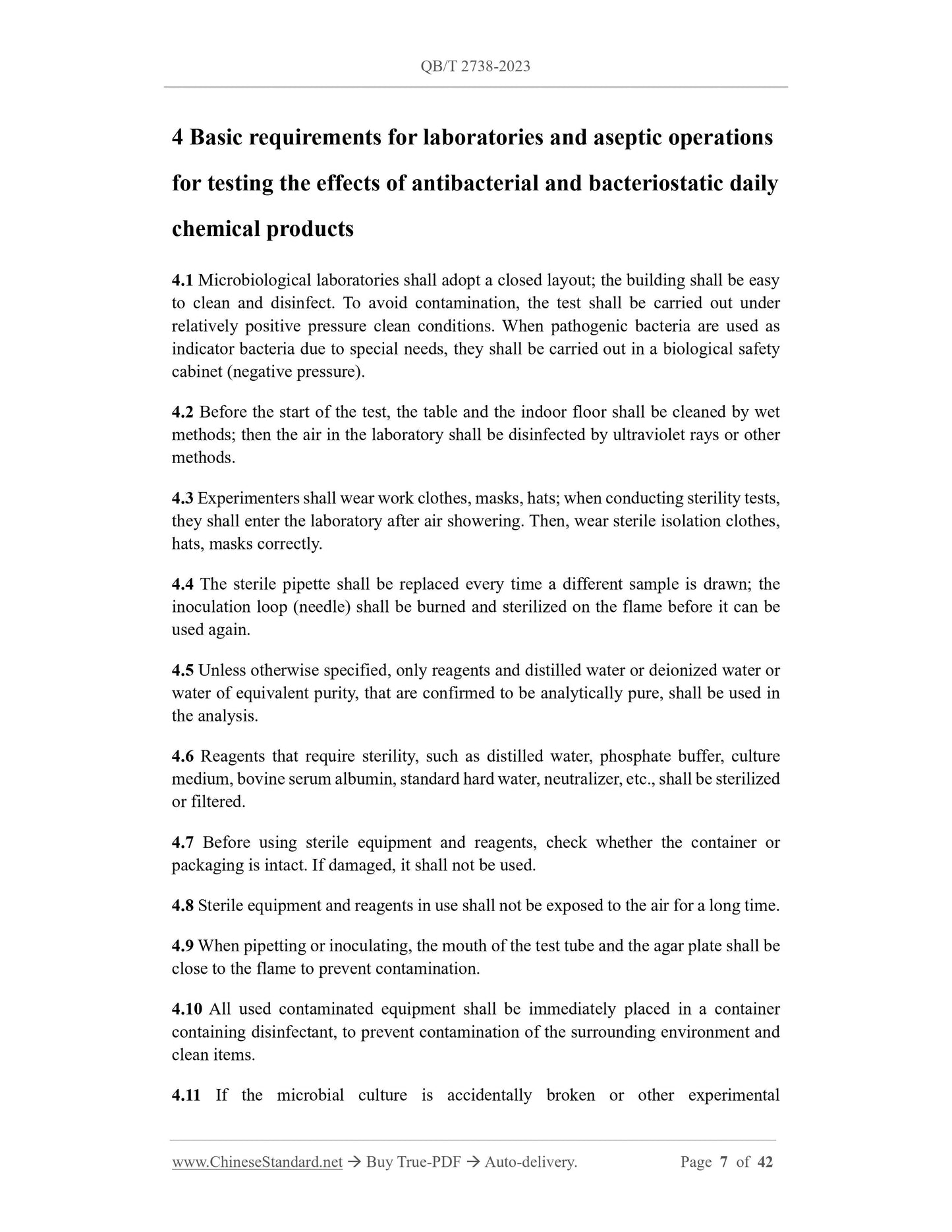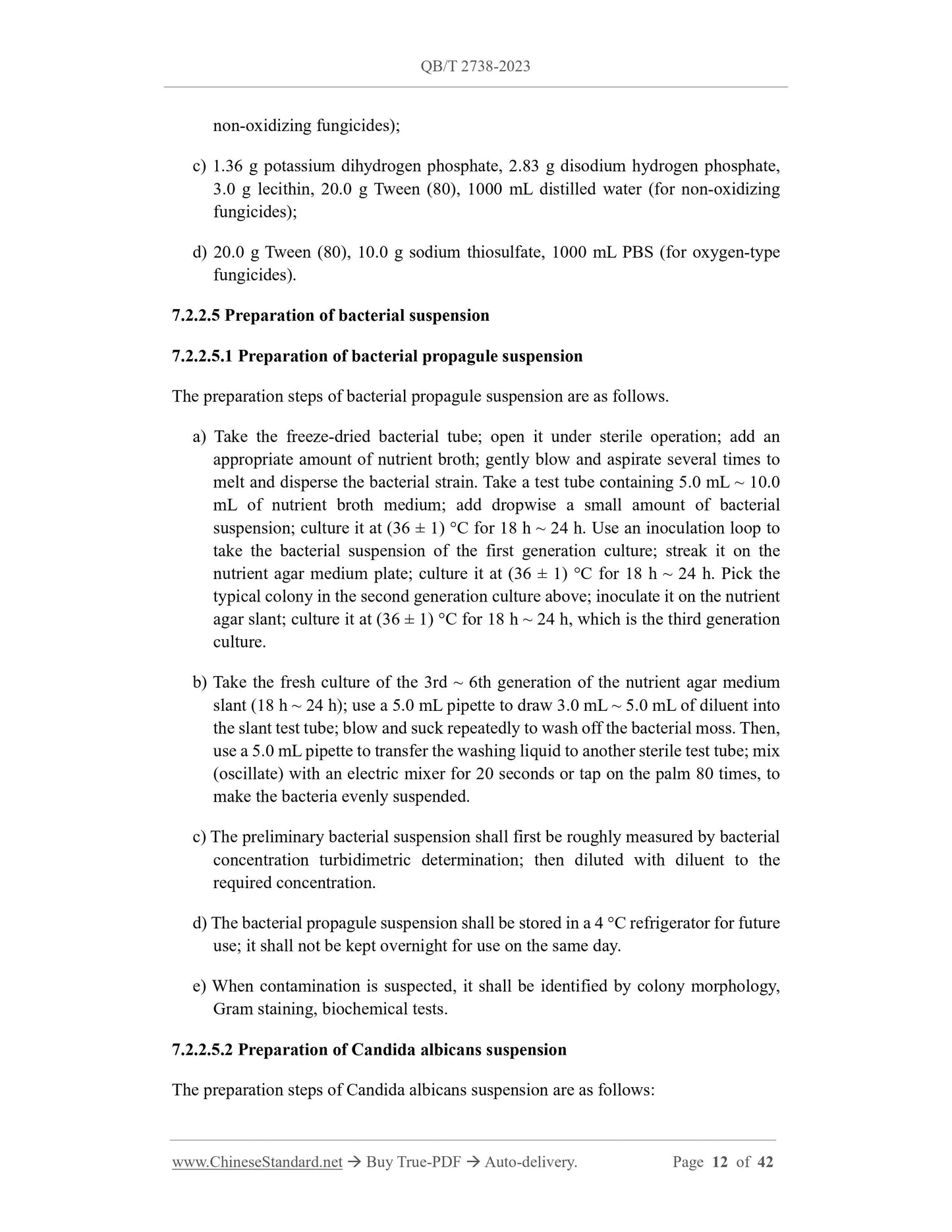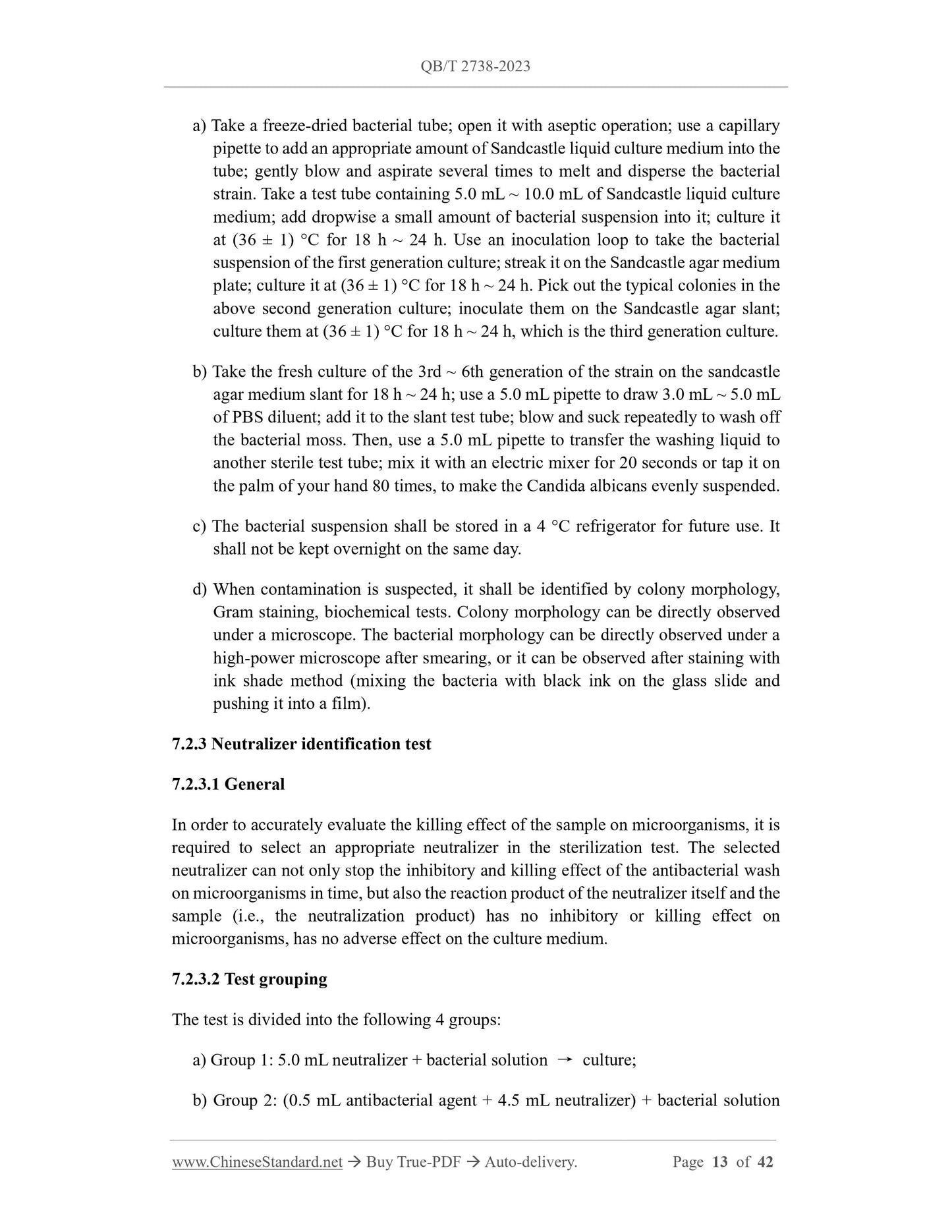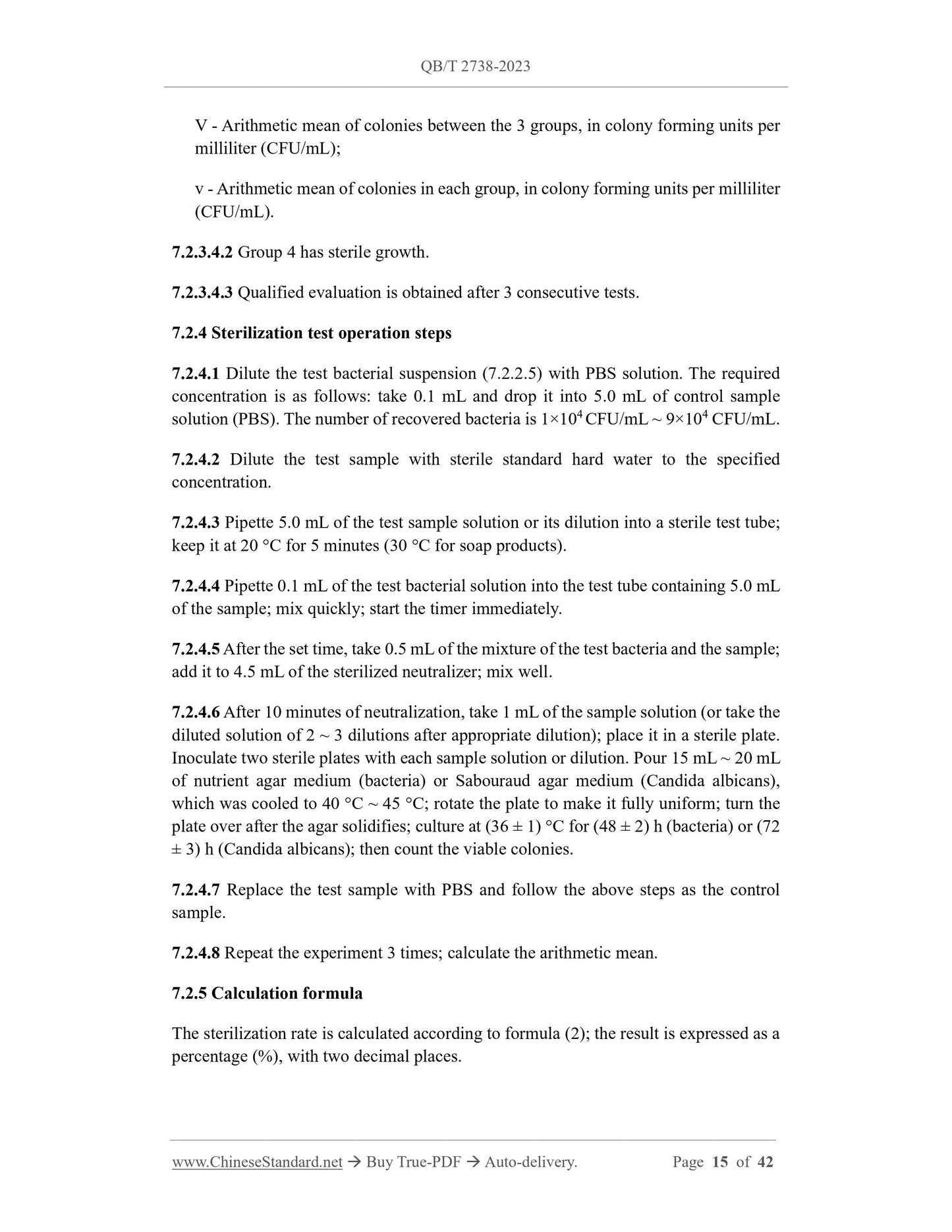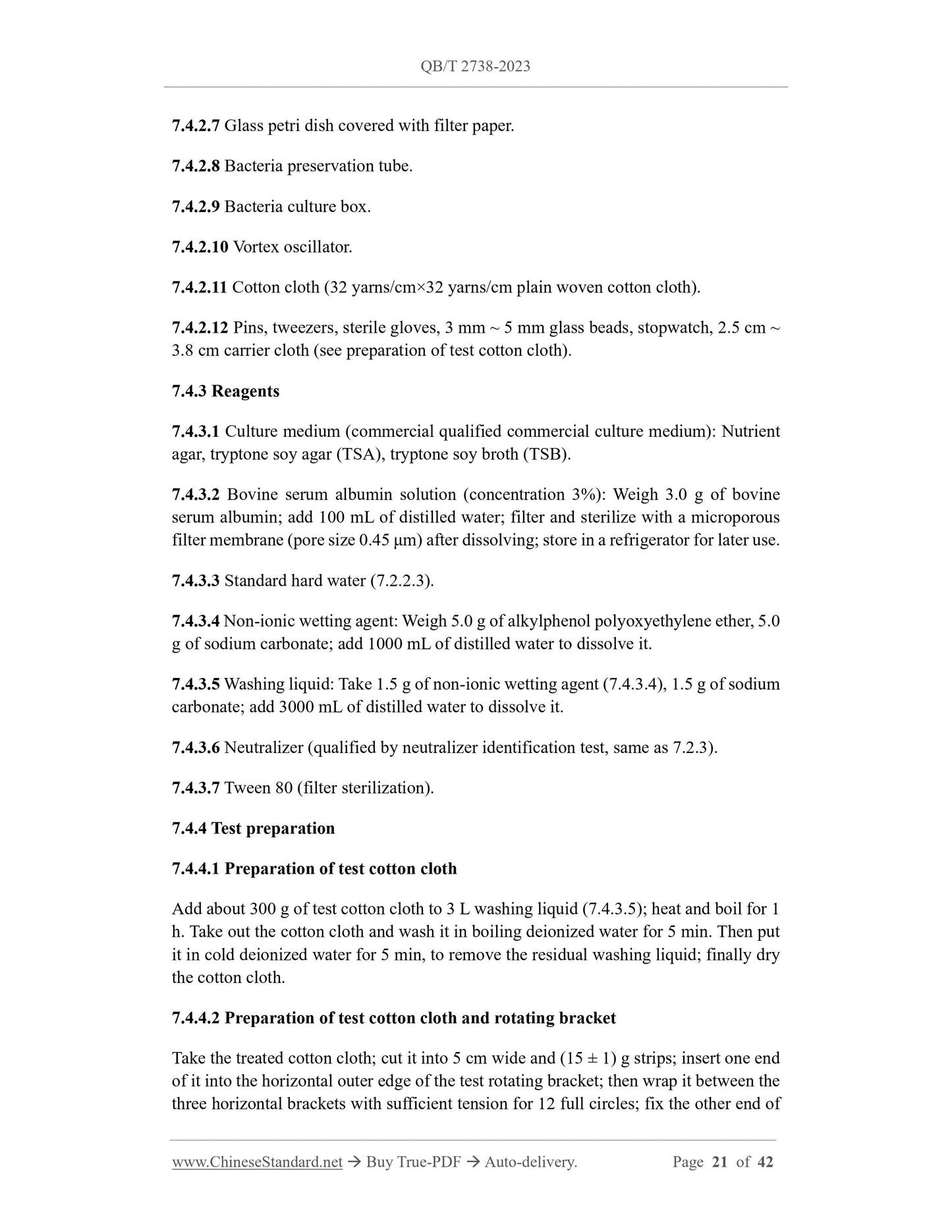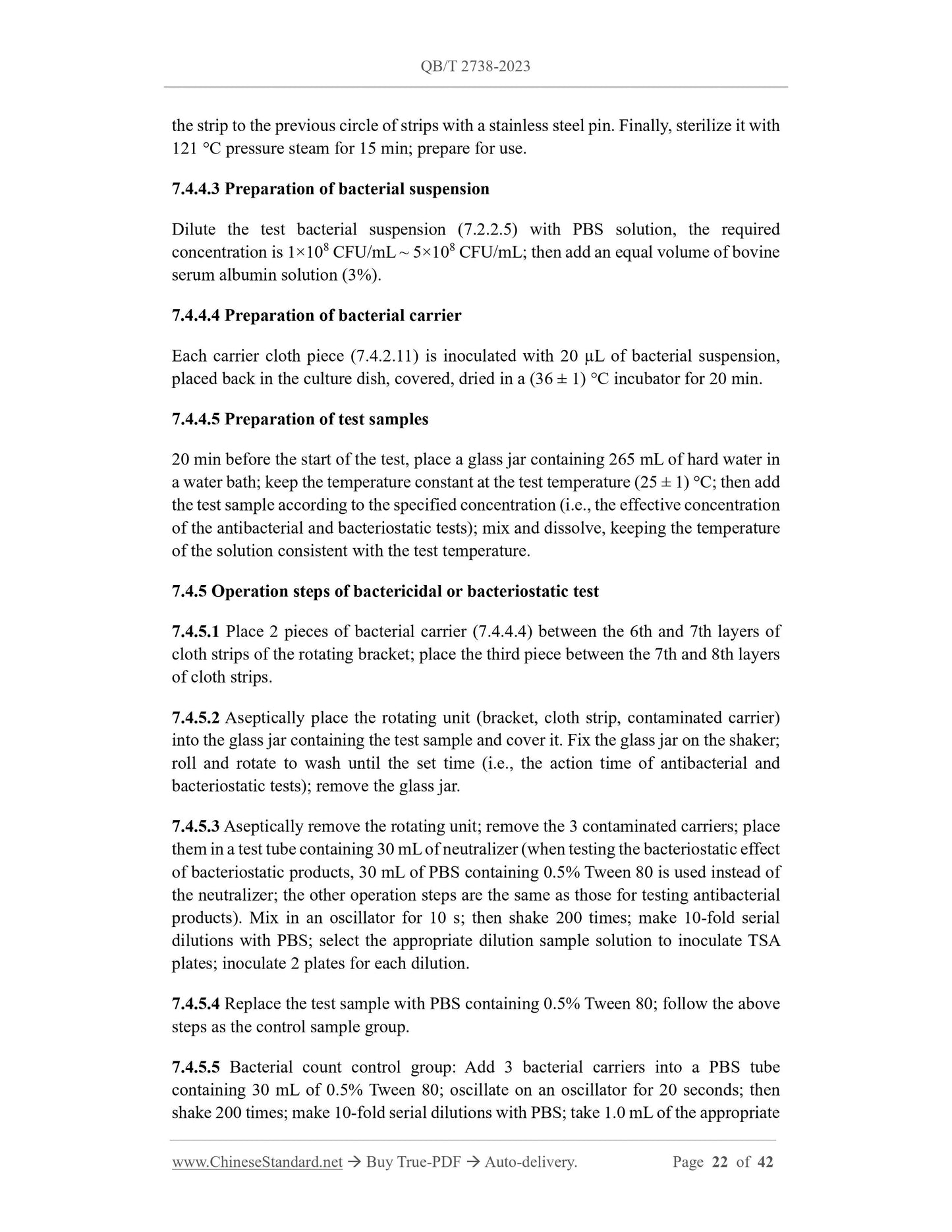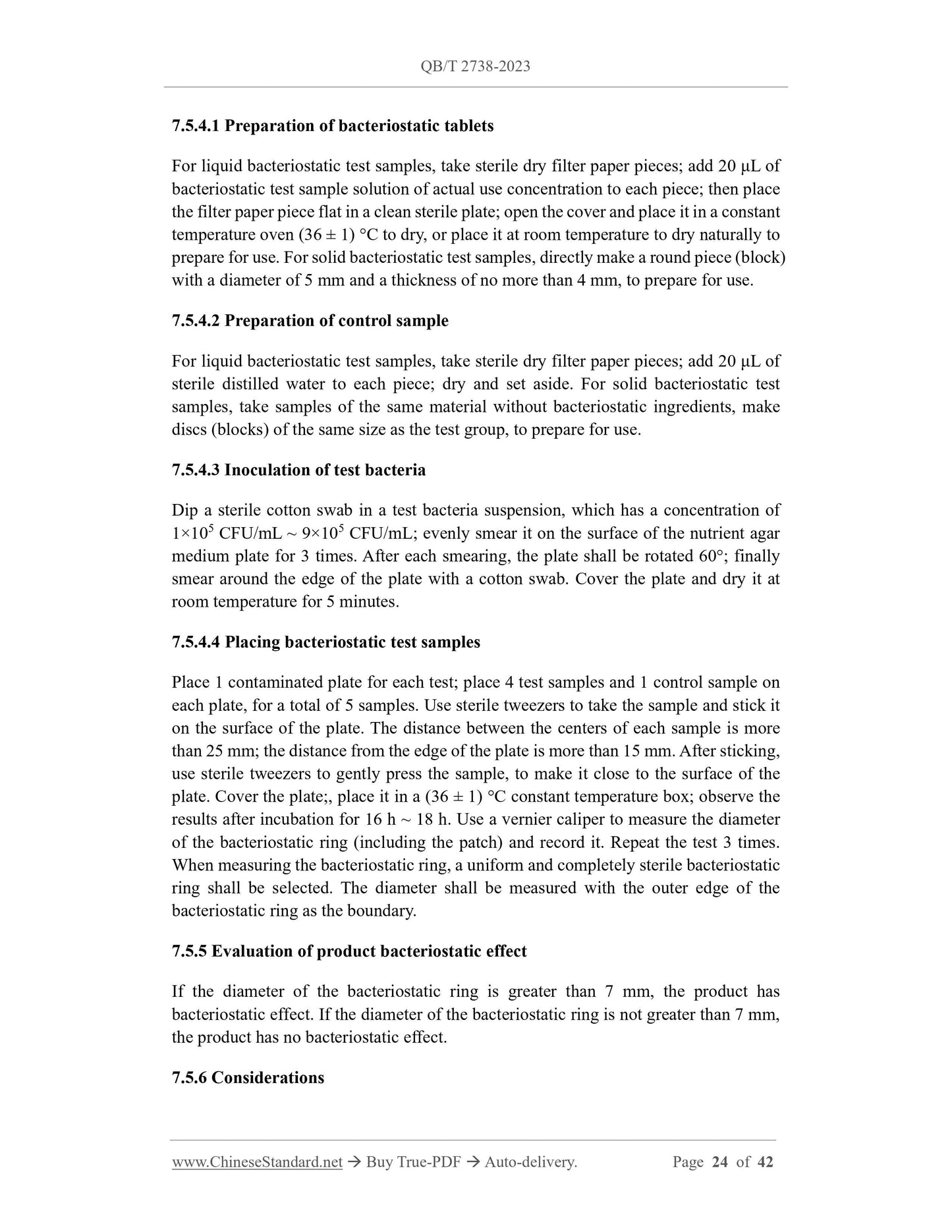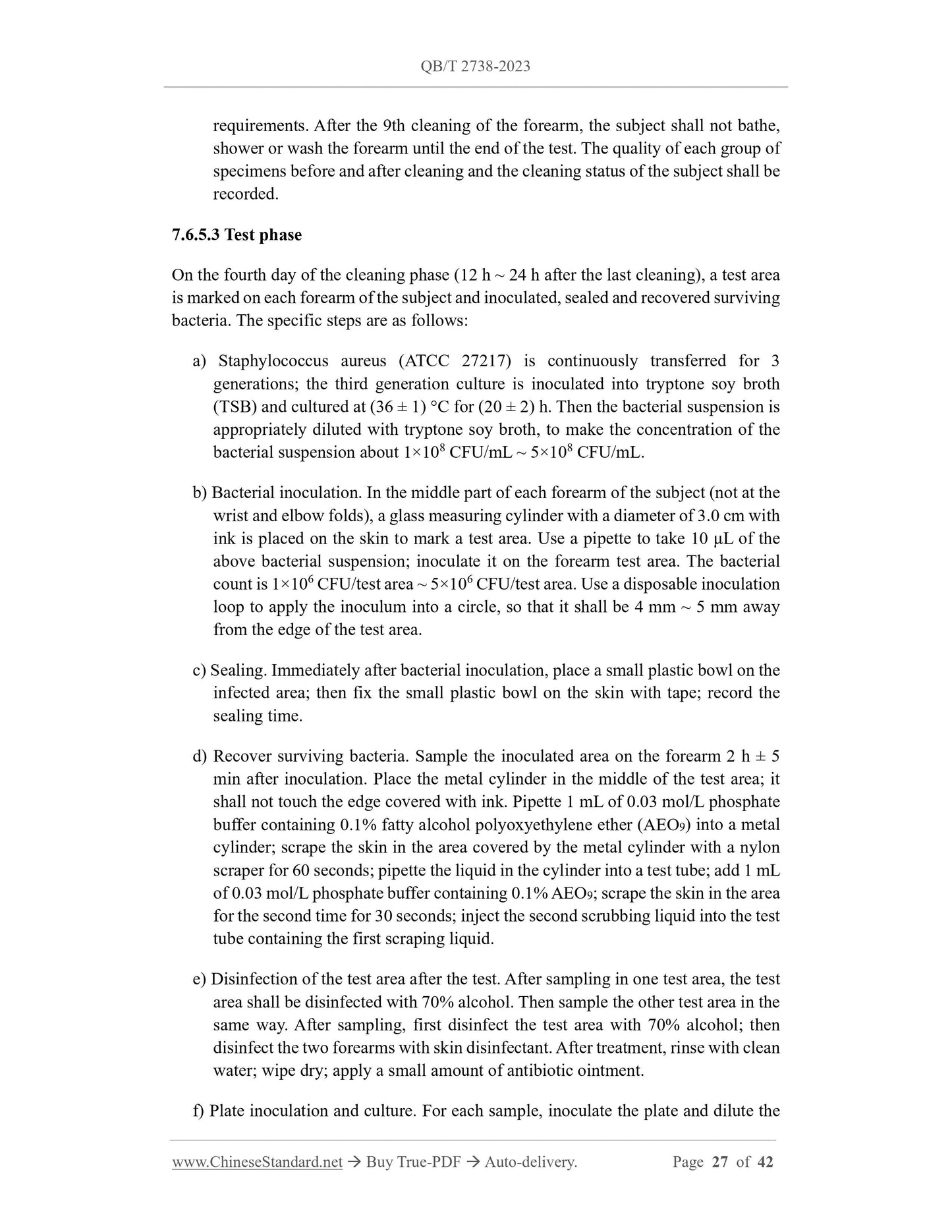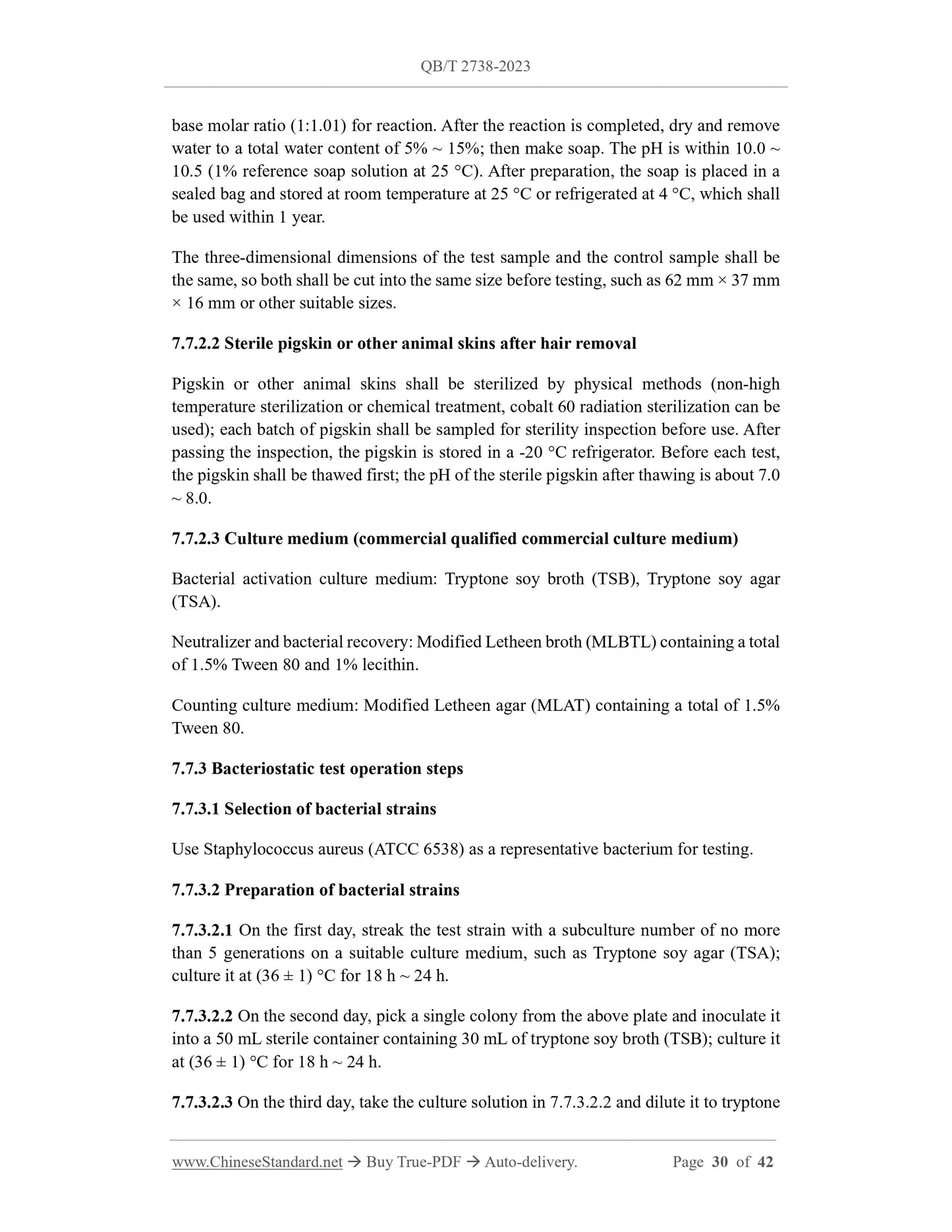1
/
of
12
www.ChineseStandard.us -- Field Test Asia Pte. Ltd.
QB/T 2738-2023 English PDF (QB/T2738-2023)
QB/T 2738-2023 English PDF (QB/T2738-2023)
Regular price
$470.00
Regular price
Sale price
$470.00
Unit price
/
per
Shipping calculated at checkout.
Couldn't load pickup availability
QB/T 2738-2023: Evaluating methods for antibacterial and bacteriostatic efficacy of daily chemical products
Delivery: 9 seconds. Download (and Email) true-PDF + Invoice.Get Quotation: Click QB/T 2738-2023 (Self-service in 1-minute)
Newer / historical versions: QB/T 2738-2023
Preview True-PDF
Scope
This document describes the detection method of the antibacterial and bacteriostaticefficacy of daily chemical products with special hygiene functions; stipulates the
evaluation criteria.
This document is applicable to the testing and evaluation of the antibacterial and
bacteriostatic properties of common detergents. The testing and evaluation of the
antibacterial and bacteriostatic properties of other daily chemical products are selected
according to the purpose.
Basic Data
| Standard ID | QB/T 2738-2023 (QB/T2738-2023) |
| Description (Translated English) | Evaluating methods for antibacterial and bacteriostatic efficacy of daily chemical products |
| Sector / Industry | Light Industry Standard (Recommended) |
| Classification of Chinese Standard | Y40 |
| Classification of International Standard | 71.100.40 |
| Word Count Estimation | 29,281 |
| Date of Issue | 2023-04-21 |
| Date of Implementation | 2023-11-01 |
| Issuing agency(ies) | Ministry of Industry and Information Technology |
| Summary | This standard specifies the detection methods and evaluation standards for the antibacterial and bacteriostatic effects of daily chemical products with special hygienic functions. This standard is suitable for testing the antibacterial and bacteriostatic properties of common detergent products. Other daily chemical products can also be selected and adopted according to their uses. |
Share
